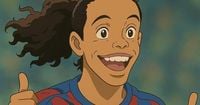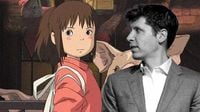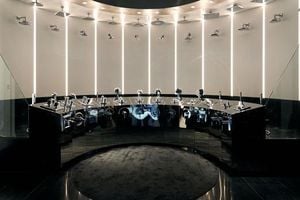In recent days, a fascinating trend has emerged on social media, allowing users to transform selfies and family photos into stunning "portraits" styled after the iconic Studio Ghibli animations. This phenomenon took off following the launch of OpenAI's "Images for ChatGPT" feature, which sparked a wave of creativity across platforms like X (formerly Twitter).
As users began sharing their own "ghiblified" images—ranging from personal snapshots to public figures like former President Donald Trump—the internet buzzed with excitement. Sam Altman, CEO of OpenAI, even joined the fun by updating his X profile picture to a Ghibli-style version of himself, humorously noting the overwhelming demand that seemed to be causing OpenAI's servers to "melt."
The trend quickly escalated, with the official White House account contributing to the frenzy by posting an image of a Dominican Republic woman, stylized in a Ghibli scene, who had recently been detained by U.S. immigration authorities. While many found joy in this new artistic expression, it also raised significant ethical and copyright concerns.
Critics have voiced their worries that OpenAI might be exploiting the works of artists, including Hayao Miyazaki, the co-founder of Studio Ghibli. Known for his meticulous hand-drawn animations, Miyazaki's creations demand years of dedication and detail. In fact, animations like "My Neighbor Totoro" and "Spirited Away" are the result of painstaking craftsmanship, contrasting sharply with the rapid output of AI-generated images.
OpenAI has acknowledged these concerns, asserting that the new tool would adopt a "conservative approach" to mimicking the aesthetics of individual artists. According to the company, it has implemented a refusal trigger to prevent users from generating images in the style of living artists. However, the company allows broader studio styles, which have led to some truly charming and original creations.
The controversy surrounding what some are calling "Ghibli-gate" is just the latest chapter in an ongoing saga of legal battles involving news organizations, writers, and musicians who claim their works have been used to train AI models without permission. In a 2016 documentary, Miyazaki expressed his disdain for AI-generated art, calling it "an insult to life itself," a sentiment that resonates strongly amid current debates over the authenticity and ethical implications of AI in creative fields.
As the trend continues to gain traction, many users are eager to learn how to create their own Ghibli-style images using ChatGPT. Since the feature's rollout on March 25, 2025, both subscribers and free users have been experimenting with the new capabilities. The high demand for this service has prompted OpenAI to impose certain restrictions, leading to the emergence of alternative tools for those wishing to explore the enchanting world of Ghibli-inspired art.
For those interested in diving into this creative endeavor, the process begins by accessing the appropriate platforms. Users can upload their photos and use detailed prompts to guide the AI in generating illustrations that capture the essence of Studio Ghibli's vibrant colors and artistic nuances. The free version of ChatGPT, while limited, still offers opportunities to create stunning images, while subscribers to the paid ChatGPT Plus plan have access to integrated tools like DALL·E for more refined outputs.
Moreover, aspiring artists can also explore various other AI platforms, some of which offer free options, to achieve similar results. Tools like Deep Dream Generator and Midjourney allow users to create images based on their own photos, while others, such as getimg.ai and Grok, provide free services with varying levels of quality and detail.
Despite the excitement surrounding these advancements, the issue of copyright remains a pressing concern. OpenAI has stated that while it prevents the generation of works in the style of individual living artists, it still allows for creations inspired by broader studio styles. This raises questions about the fine line between inspiration and imitation, especially as AI technologies continue to evolve.
The ongoing dialogue about the implications of AI-generated art underscores the need for a thoughtful approach to creativity in the digital age. As users navigate this new landscape, they must also consider the ethical ramifications of their artistic endeavors, particularly in light of Miyazaki's poignant critiques.
In conclusion, the trend of transforming photos into Ghibli-style illustrations has opened up new avenues for creative expression, sparking joy and inspiration across social media. However, as the excitement grows, so too does the need for a deeper understanding of the ethical considerations surrounding AI in art. Users are encouraged to explore this enchanting world while remaining mindful of the artists whose work continues to inspire their creativity.






